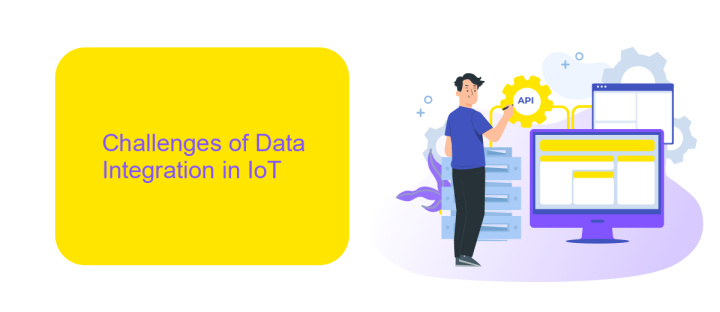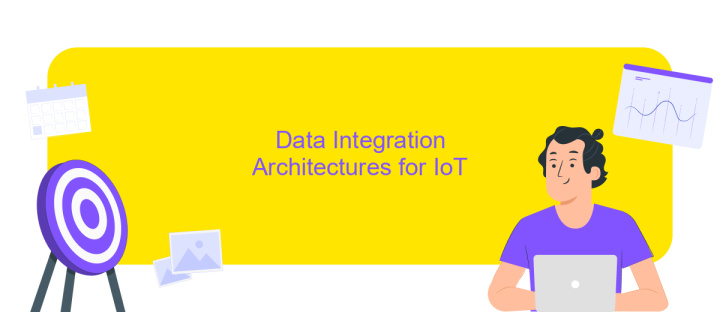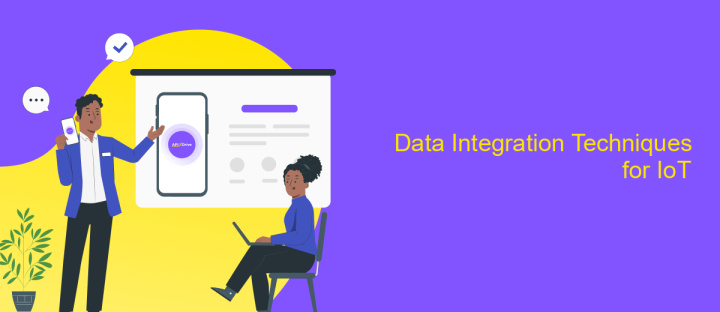Data Integration Internet of Things
Data integration in the Internet of Things (IoT) is a critical aspect that enables seamless communication and data exchange between various connected devices. As IoT continues to expand, integrating diverse data sources becomes essential for optimizing performance, enhancing decision-making, and driving innovation across industries. This article explores key strategies, challenges, and solutions in achieving effective data integration within the IoT ecosystem.
Introduction
The rapid proliferation of Internet of Things (IoT) devices has led to an unprecedented amount of data being generated daily. This data holds immense potential for insights and innovations across various industries. However, the sheer volume and diversity of data sources present significant challenges in terms of integration, making it essential to develop robust data integration strategies.
- Seamless data collection from heterogeneous IoT devices
- Efficient data processing and storage solutions
- Ensuring data quality and consistency
- Real-time data analytics and decision-making
- Scalability and adaptability of integration frameworks
Addressing these challenges requires a comprehensive approach that combines advanced technologies and methodologies. Effective data integration not only enhances the value derived from IoT data but also enables organizations to make informed decisions, optimize operations, and innovate continuously. This paper explores various strategies and best practices for achieving seamless data integration in the IoT ecosystem.
Challenges of Data Integration in IoT

Data integration in the Internet of Things (IoT) presents a myriad of challenges, primarily due to the diversity and volume of data generated by numerous interconnected devices. One significant issue is the interoperability between various devices and platforms, which often use different communication protocols and data formats. This lack of standardization can lead to difficulties in aggregating and analyzing data, making it essential to employ robust integration solutions that can handle heterogeneous data sources.
Another critical challenge is ensuring data security and privacy. With the vast amount of data being transmitted between devices, there is an increased risk of cyber-attacks and unauthorized access. Implementing strong encryption methods and secure communication protocols is vital to safeguarding sensitive information. Services like ApiX-Drive can be instrumental in addressing these challenges by offering seamless integration capabilities that support various data formats and ensure secure data transfer, thereby enhancing the overall efficiency and reliability of IoT systems.
Data Integration Architectures for IoT

Data integration architectures for the Internet of Things (IoT) are essential for managing the vast amounts of data generated by interconnected devices. These architectures ensure seamless data flow, real-time analytics, and effective decision-making. They typically consist of several key components and strategies to handle the unique challenges of IoT environments.
- Edge Computing: Processing data at the edge of the network to reduce latency and bandwidth usage.
- Cloud Integration: Centralizing data storage and processing in the cloud for scalability and accessibility.
- Data Lake: Storing raw data in its native format for future analysis and machine learning applications.
- Data Warehousing: Aggregating and structuring data for efficient querying and reporting.
- Middleware: Facilitating communication between different IoT devices and systems.
Implementing these architectures requires careful planning and consideration of factors such as data security, interoperability, and scalability. By leveraging these components, organizations can harness the full potential of IoT, turning raw data into valuable insights and actionable intelligence.
Data Integration Techniques for IoT

Data integration is a critical component in the Internet of Things (IoT) ecosystem, enabling seamless communication between disparate devices and systems. With the proliferation of IoT devices, integrating data from various sources has become more complex and necessitates robust techniques to ensure data consistency, accuracy, and real-time processing.
Several techniques have been developed to address these challenges, each with its own set of advantages and use cases. These techniques help in aggregating, transforming, and harmonizing data from different IoT devices, making it accessible and usable for analytics and decision-making.
- ETL (Extract, Transform, Load): This traditional method involves extracting data from multiple sources, transforming it into a suitable format, and loading it into a centralized data warehouse.
- Stream Processing: This technique processes data in real-time as it is generated, providing immediate insights and enabling prompt actions.
- Data Virtualization: This approach allows data from different sources to be accessed and queried without requiring physical movement or replication.
Choosing the right data integration technique depends on the specific requirements of the IoT application, including the volume of data, the need for real-time processing, and the complexity of the data sources. By leveraging these techniques, organizations can ensure efficient and effective data integration, driving better outcomes in their IoT initiatives.


Benefits of Data Integration in IoT
Data integration in the Internet of Things (IoT) offers numerous benefits, enhancing the overall efficiency and functionality of connected devices. By seamlessly merging data from various sources, it provides a comprehensive view of operations, enabling better decision-making and predictive analytics. This holistic approach allows for real-time monitoring and management, reducing downtime and improving productivity. Additionally, integrated data can enhance customer experiences by offering personalized services and faster response times.
One of the key advantages of data integration in IoT is the ability to streamline processes using automation tools like ApiX-Drive. This service facilitates the integration of various applications and systems without the need for extensive coding knowledge. By automating data flows and synchronizing information across platforms, ApiX-Drive helps businesses save time and reduce errors. This not only improves operational efficiency but also allows organizations to focus on innovation and strategic growth, making IoT ecosystems more robust and adaptive to changing needs.
FAQ
What is Data Integration in the context of the Internet of Things (IoT)?
Why is Data Integration important for IoT?
What are some common challenges in IoT Data Integration?
How can businesses automate and manage IoT Data Integration effectively?
What are the benefits of using an integration platform for IoT Data Integration?
Routine tasks take a lot of time from employees? Do they burn out, do not have enough working day for the main duties and important things? Do you understand that the only way out of this situation in modern realities is automation? Try Apix-Drive for free and make sure that the online connector in 5 minutes of setting up integration will remove a significant part of the routine from your life and free up time for you and your employees.

